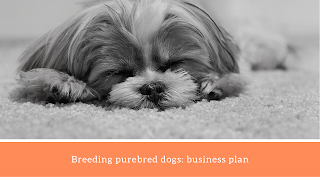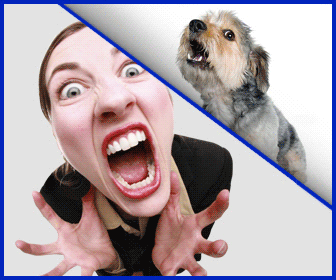Breeding purebred dogs: business plan - Best Pets 4 Home
Breeding purebred dogs: business plan
Few breeders can boast of super-profits in dog breeding. But the ranks of dog enthusiasts are regularly growing with new recruits who plan to generate income from the sale of elite breed puppies. To do this, it is planned to acquire a thoroughbred female dog and regularly mate her with a breeding male. But business roads are never smooth. As with any business, a budding breeder will have to consider many factors that make a dog breeding business profitable or unprofitable. Among the primary risks are competition, market attractiveness, disease, and so on.
Breeding dogs: pros and cons
A dog is a friend of man. This thought prompts tens of thousands of people to return to the issue of acquiring a dog, and a larger percentage of them still decide to buy a four-legged friend. The business plan should target this target group of potential dog owners. But the result will not be visible immediately - a constant stream of buyers and the fame of a reliable breeder will come to you in a few years. One purchased pedigree bitch will not lead to wealth - the cost of its maintenance will nullify the income from the sale of young animals. For a stable income, you should work with 10-12 breeding females and keep two or three active males, providing an influx of puppies. The breeder's time will be devoted to caring for the dogs, keeping them and feeding them.
When choosing a breed of dog for breeding, consumer demand should be taken into account. The "fashion" for a particular breed is often changing, so if you are not a fanatic of Labradors or Dalmatians, it is best to tackle the breeds that are consistently popular in your region. The size of dogs should also be taken into account - the size and weight of the animal directly affect their "adulthood". Large dogs give offspring from one and a half years old, animals of medium and small breeds can be mated from 15 months. Litter size can vary as well as the size and market average of puppies. Moreover, dogs are not rabbits, and they cannot reproduce four times a year. The average for all dog breeds should be taken into account - three litters every two years. For the puppies to have a market value, the breeder should study the profession of a veterinarian, groomer,
Choosing a room for a nursery
Great attention should be paid to a comfortable and warm separate area for keeping dogs. No apartments in the city will fit here - the best option would be a private house in the suburbs with a special extension. Large dogs need a lot of personal space and quality zoning. The total area of the nursery can be calculated based on the number of adult animals: for two individuals of the same sex, a separate box with an area of 2 sq. m, equipped with an aviary (according to sanitary standards - up to 8 square meters). For keeping pregnant and whelping females, separate boxes are needed. Do not forget to take into account the costs of heating, sewerage, ventilation, lighting.
Registration of commercial activities
The first obligations to the state budget arise not from the moment of the start of commercial activity, but from the first profit received. Therefore, the registration of your own business can be postponed until the first litter of puppies. In most cases, Russian breeders choose to register their own individual entrepreneurs with a simplified taxation system at a rate of 15% of deductions. In this case, there is no need to keep tax records, there is no paperwork, and deductions to the budget are made from each successful sale.
Optimal breed
The rating of the cost of dogs can be studied on the Internet. But you should not rely on it - the final profit of the breeder directly depends on demand. Supply factors are influenced by the region of the country, its population, climatic conditions, national preferences, and much more. Large dogs are not popular in megalopolises - there is no place for their breeding and walking. On the contrary, in small villages and regional centers, dogs of large breeds are in demand. Hunting dogs are a separate conversation. They are needed in all regions, but the sale of puppies is possible only if you are an avid hunter and enter hunting clubs.
The most popular breeds in our country are:
- labradors. The average cost of puppies is 15-40 thousand rubles. One litter can have up to 12 puppies;
- Central Asian Shepherd Dogs. The cost of one dog is up to 30 thousand rubles. The number of pups in a litter is unpredictable: 1 to 15 puppies at a time;
- Yorkshire Terriers. Ideal for breeding in large cities: they are quite popular, small in size, and take less time to walk. One puppy will cost 15-20 thousand rubles;
- chihuahua. Another popular breed of urban decorative dog "pocket" size. There are 1-4 puppies in the litter, the cost of which varies from 10 to 50 thousand rubles;
husky is a foreign analog of the domestic husky. Large blue-eyed dogs with a balanced character. These dogs feel great in the northern and middle latitudes of our country, but they definitely need fresh air and space. Up to 12 puppies can be born at a time, the market price of each of them is up to 50 thousand rubles.
A large range of the final cost of a dog directly depends on the "quality" of the breed. Dog breeders divide all offspring into three classes:
- the pet class includes weak or rejected puppies that do not meet the standards of this breed: the wrong weight, color, size, etc.
- the breed class includes individuals that generally meet breed standards and are suitable for further breeding, this also includes pedigree dogs suitable for commercial breeding;
- show class - these are the most expensive dogs. Males and females fully complying with the standards of a particular breed in terms of exterior, health, skills, and character. Dogs of this class take part in exhibitions.
You can buy a dog from a private breeder, at an exhibition, in a kennel. It is important to analyze the pedigree, to study the veterinary passport, and it would not hurt to take a look at the parents of a pedigree dog. To shorten the waiting time for puppies, you can buy a bitch from the age of 18 months - then you will not need to wait for the second estrus. The gestation period in dogs of all breeds does not exceed 2-2.5 months.
Planned and unplanned costs
Breeding dogs is expensive. It will not work to feed a breeding dog from the table or switch it to dry food - an insufficient diet will quickly affect the appearance of the animal, its health, and ultimately affect the offspring. To get the expected income from selling puppies, you should plan for the following costs:
- cynological courses. Without specialized education, no one will register dogs or the kennel itself. The cost of the course is 5-7 thousand rubles. If you are a veterinarian by training, you can skip this point;
- breeding thoroughbred bitch. Will cost an average of 25 thousand rubles;
- construction and arrangement of a nursery - depending on the cost of land, materials, and the size of the building - from 100 thousand to 1 million rubles. We repeat that the apartment is not a place for breeding dogs;
- vitamins, accessories, special food, medicines. A large part of the cost budget. In addition to specialized food, one puppy dog should eat up to 1.5 kg of meat per day. According to the most approximate calculations, up to 50 thousand rubles will be spent on one dog for this item of expenditure;
- veterinarian consultations, preventive examinations, treatment costs. Regular medical supervision costs money, but without a veterinarian's opinion, the puppy is unlikely to be sold at market value;
- registration in international and all-Russian "canine" associations FCI, RKF, etc. Annual membership fees will cost 40 thousand rubles and more. For this, you get the official status of your dogs. Metrics, pedigrees, expert assessments, etc. are paid additionally;
- dog shows. Regular participation in dog shows will help maintain a good reputation for the breeder and showcase healthy pedigree puppies. To participate, you will need to make an organizational fee - about 1 thousand rubles per dog, spend money on groomer services, carrying, stands. If a dog has not taken part in the show, it cannot get a pedigree, which means that its puppies will not be considered purebred.
Cost optimization is possible in several directions at once. Direct supplies of feed from farms will significantly reduce the cost of feeding animals. Building a nursery outside the city - where it is cheaper, will reduce the cost of the building. Own veterinary education will significantly reduce the cost of consulting third-party canine doctors. You can save on helpers by doing everything yourself, or hire adolescents and schoolchildren to walk dogs. Payment for mating with a puppy will allow you not to add additional costs to attract a male for mating from the outside - but in this case, the owner of the male has the right to choose the puppy he likes first.
Implementation
If you nevertheless decide to go into the "dog" business and have chosen your preferred breed for breeding, prepare a small business plan, which must include the following points.
- Early construction and preparation of the nursery. This item should go first on your list - the dog should come to a place already equipped and specially designed for it.
- Selection of a female dog and direct mating. If the breeder owns breeding males - breeding will occur regularly, you can also receive income from female owners. Dog owners who bring their animals for mating will create a good additional source of income.
- Taking care of a pregnant bitch and new puppies. Numerous vitamins, the cost of food for mothers and babies - a volumetric part of the cost. During childbirth, the presence of a veterinarian is mandatory, so it is advisable to already have a specialized education.
- Sale of offspring. It is only necessary to offer puppies after registration in existing canine systems. From birth, a metric is issued to a puppy, and after the dog reaches reproductive age, this primary document is changed to a pedigree. You can post ads anywhere: on social networks, on specialized sites, through friends in canine societies, and so on.
The offspring that meets all breed standards are recommended to be left in the nursery for further reproduction. Substandard puppies can be sold at a significant discount.
So we can say that success in this difficult business is achieved by those who are really “sick” of their work and have the appropriate education.






